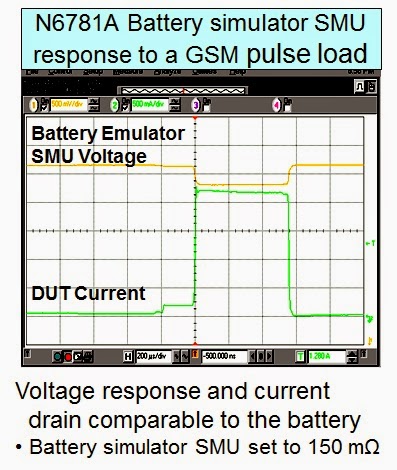I had gotten a customer support request a while ago
inquiring about what the measurement resolution was on our new family of N6900A
and N7900A Advanced Power System (APS) DC sources. Like many of our newer products they utilize
a high-speed digitizing measurement system.
“I cannot find
anything about measurement resolution in the user’s guide, it must have been
overlooked!” I was told. Indeed, we have included the measurement resolution in
the past on our previous products. We did not include it as a single fixed
value this time around, not as an oversight however, but for good reason.
Perhaps the most correct response to the inquiry is “it
depends”. Depends on what? The effective measurement resolution depends on the
measurement interval that is being used. Why is that? Simply put, there is
noise in any measurement system. With older and more basic products that provide
low speed measurements and inherently have a long measurement interval that the
voltage or current signal is integrated over, measurement system noise is
usually not a big factor. However, with the higher speed digitizing measurement
systems we now employ in our performance DC sources, factoring in noise based
on the measurement interval provides a much more realistic and meaningful
answer.
For the N6900A and N7900A APS products we include Table 1
shown below, in our user’s guide to help customers ascertain what the
measurement accuracy and resolution is, based on the measurement interval (i.e.
measurement integration period) being used is.
Table 1: N6900A/N7900A measurement accuracy and resolution
vs. Measurement interval
This table is meant to provide an added error term when
using shorter measurement intervals. We use 1 power line cycle (1 NPLC) as the
reference point at the top of the table, for the measurement accuracy provided
in our specifications. This is a result of averaging 3,255 single samples together.
By doing this we have effectively spread the measurement system noise over a
greater band and filtered it out by the averaging. For voltage measurements the
effective resolution is over 20 bits.
Note now at the bottom of the table there is the row for
one point averaged. It is for 0.003 NPLCs, which is 5 microseconds, the
sampling period of the digitizer in our DC source. For a single sample the
effective measurement resolution is now 12.3 bits for voltage. Note also we
provide an accuracy error adder term of 0.02%. This is taking into account the
measurement repeatability affecting the accuracy.
A convenient expression for converting from number of
bits to dB of signal to noise (SNR) for a digitizer is given by:
SNR (dB) = 6.02 x n (# of bits) + 1.76
The 12.3 bits of effective resolution equates to 75.8 dB of
SNR, which is very much in line with what to expect from a wide band, high
speed digitizing measurement system like what is provided in this product
family.
As previously mentioned the effective measurement
resolution is over 20 bits for a 1 NPLC measurement interval. This actually
happens to be greater than the actual ADC used. While there is less resolution
when using shorter measurement intervals, conversely greater resolution can be
achieved by using longer measurement intervals, which I expect to talk more about
in a future posting here on “Watt’s Up?”!






